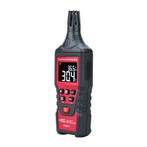Difference Between Fluorescence Microscopy and Confocal Laser Microscopy
First, the principle is different
1. Fluorescence microscope: It uses ultraviolet light as a light source to irradiate the object to be inspected to make it emit fluorescence, and then observe the shape and location of the object under the microscope.
2. Laser confocal microscope: A laser scanning device is installed on the basis of fluorescence microscope imaging, and the fluorescent probe is excited by ultraviolet light or visible light.
Second, the characteristics are different
1. Fluorescence microscope: used to study the absorption, transportation, distribution and localization of chemical substances in cells. Some substances in cells, such as chlorophyll, can fluoresce after being irradiated by ultraviolet rays; other substances can not fluoresce by themselves, but if they are dyed with fluorescent dyes or fluorescent antibodies, they can also fluoresce when irradiated by ultraviolet rays.
2. Laser confocal microscope: use computer to process images to obtain fluorescent images of the internal microstructure of cells or tissues, and observe physiological signals such as Ca2+, pH, membrane potential and changes in cell morphology at the subcellular level .
3. Different uses
1. Fluorescence microscopy: Fluorescence microscopy is a basic tool for immunofluorescence cytochemistry. It is composed of main components such as light source, filter plate system and optical system. It uses a certain wavelength of light to excite the specimen to emit fluorescence, and magnifies it through the objective lens and eyepiece system to observe the fluorescence image of the specimen.
2. Laser confocal microscopy: Laser scanning confocal microscopy has been used in the study of cell morphological localization, three-dimensional structure reorganization, dynamic change process, etc., and provides practical research methods such as quantitative fluorescence measurement and quantitative image analysis, combined with other related biological technologies It has been widely used in the fields of molecular cell biology such as morphology, physiology, immunology, genetics, etc.






